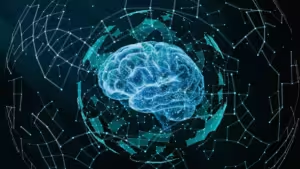Artificial intelligence (AI) has developed rapidly over the past decade, and its status as a revolutionary force using these types of technologies has been increasingly recognized. This subset of machine learning uses multi-layered neural networks, or “deep” algorithms, to analyze large amounts of data, select features, or make predictions from them. The power and benefits of deep learning are formidable, making it an essential technology for destiny.
What is Deep Learning?
It is a sophisticated form of AI that mimics the workings of the human brain in processing data and creating patterns for decision-making. Unlike traditional machine learning, which requires manual feature extraction, deep learning algorithms automatically identify the best features to use for classification. This capability allows them to handle more complex tasks, such as image and speech recognition, natural language processing, and even autonomous driving.
The Impact of Deep Learning on Various Industries
Healthcare
In healthcare, significant strides have been made. From diagnosing diseases through medical imaging to predicting patient outcomes, technology is transforming how medical professional work. For instance, deep learning models can analyze radiology images more accurately and faster than human radiologists, leading to early detection of conditions like cancer.
Finance
The financial sector also benefits from deep learning. Banks and financial institutions use these models for fraud detection, risk management, and even algorithmic trading. The ability to process and analyze large datasets quickly helps these institutions make more informed decisions and enhance security measures.
Autonomous Vehicles
One of the most exciting applications of deep learning is in the development of autonomous vehicles. These vehicles rely on its algorithms to interpret sensor data, recognize objects, and make driving decisions in real-time. This technology promises to make transportation safer and more efficient in the future.
The Future of Deep Learning
Its future looks promising. As computational power increases and more data becomes available, these models’ capabilities will continue expanding. Researchers are also exploring ways to make deep learning models more efficient and interpretable, addressing some of the current limitations.
Enhanced Human-AI Collaboration
One exciting area of development is enhanced human-AI collaboration. Deep learning can augment human capabilities, assisting professionals in various fields by providing insights and recommendations based on large datasets. This collaboration can lead to more innovative solutions and improved decision-making.
Ethical Considerations
As deep learning becomes more prevalent, it is crucial to address ethical considerations. Ensuring that models are fair, transparent, and unbiased is essential to prevent misuse and build trust among users. Researchers and policymakers must work together to establish guidelines and regulations that promote the responsible use of AI.
Conclusion:
Deep learning stands at the forefront of AI innovation, with the potential to revolutionize various industries and improve our daily lives. By understanding its principles, challenges, and applications, we can better appreciate its impact and prepare for a future where it plays an integral role in technological advancements. As we continue to explore this next frontier in AI, the possibilities seem limitless, offering exciting prospects for both current and future generations.


